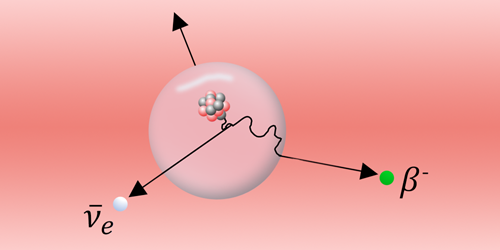Searching for Ghost Particles with a Mechanical Sensor
Researchers have learned much about neutrinos over the past few decades, but some mysteries remain unsolved. For example, the standard model predicts that neutrinos are massless, but experiments say otherwise. One possible solution to this mass mystery involves another group of neutrinos that does not interact directly via the weak nuclear force and is therefore extremely difficult to detect. David Moore of Yale University and his colleagues have proposed a way to search for these so-called sterile neutrinos using a radioactive nanoparticle suspended in a laser beam [1].
Moore and his colleagues suggest levitating a 100-nm-diameter silica sphere in an optical trap and cooling it to its motional ground state. If the nanoparticle is filled with nuclei that decay by emitting neutrinos—such as certain argon or phosphorous isotopes—then electrons and neutrinos zipping from decaying nuclei should give it a momentum kick. By measuring the magnitude of this kick, the team hopes to determine the neutrinos’ momenta. Although most of these neutrinos will be the familiar three neutrino flavors, sterile neutrinos—if they exist—should also occasionally be emitted, producing unexpectedly small momentum kicks. Moore says that monitoring a single nanoparticle for one month would equate to a sterile-neutrino sensitivity 10 times better than that of any experiment tried so far.
Moore and his team are currently working on a proof-of-principle experiment using alpha-emitting by-products of radon, which result in a larger momentum kick. Once the techniques are optimized, they expect that switching to beta-decaying isotopes will let them see heavy sterile neutrinos in the 0.1–1 MeV mass range. Introducing more quantum tricks to manipulate the nanoparticle’s quantum state will make future experiments sensitive to even lighter sterile neutrinos.
–Katie McCormick
Katie McCormick is a freelance science writer based in Sacramento, California.
References
- D. Carney et al., “Searches for massive neutrinos with mechanical quantum sensors,” PRX Quantum 4, 010315 (2023).




